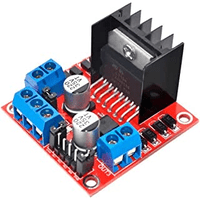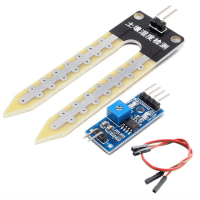Buzzer is used to generate sound, beep or even melody of a song. It can be found in alarm devices, computers, timers and confirmation of user input such as a mouse click or keystroke. A piezo buzzer is not like a regular speaker that you might think of. It uses a material that actually changes shape when you apply electricity to it which in turn creates noise. The faster you bend the material, the higher the pitch of the noise that is produced.
Trending Now

How to use the L298N motor driver module
The L298N Motor Driver is a controller that uses an H-Bridge to easily control motors direction and PWM to control the speed. This module allows you to independently manage two motors of up to 2A each in both directions. Supply range may vary between 5V and 35V, enough for most DC motor projects.

Practical guide to PHP 8.5 containerization
Containerization for PHP 8.5 gives a simple, predictable and practical way to run applications without worrying about what the host machine has installed. A container bundles PHP, extensions and all required tools in one place. This helps teams keep things clean, reproducible and easy to work with. The idea is straightforward: you build an image, start containers from it and share the image when needed. PHP 8.5 brings performance improvements and a smoother developer experience, so pairing it with Docker is a natural step for modern projects.
Recent articles

Practical guide to PHP 8.5 containerization
Containerization for PHP 8.5 gives a simple, predictable and practical way to run applications without worrying about what the host machine has installed. A container bundles PHP, extensions and all required tools in one place. This helps teams keep things clean, reproducible and easy to work with. The idea is straightforward: you build an image, start containers from it and share the image when needed. PHP 8.5 brings performance improvements and a smoother developer experience, so pairing it with Docker is a natural step for modern projects.

Soil moisture sensor with Arduino
Soil moisture modules are a simple and friendly way to check how wet your soil is using a pair of probes and a small control board. They offer two outputs you can use with Arduino: an analog signal that changes depending on how wet the soil is, and a digital signal that flips on or off when the moisture crosses a level you set with the onboard potentiometer. The whole setup is compact, cheap and very popular for plant care projects, garden automation and basic hobby experiments.

Engineering Management V: Connecting the dots
Every engineering manager starts with the same instinct: to solve problems. It is what made you good as an engineer, and what first earned you trust as a leader. But as your scope grows, the definition of what it means to solve problems must change. Your role is no longer to fix issues directly, but to ensure the team can fix them without you.
